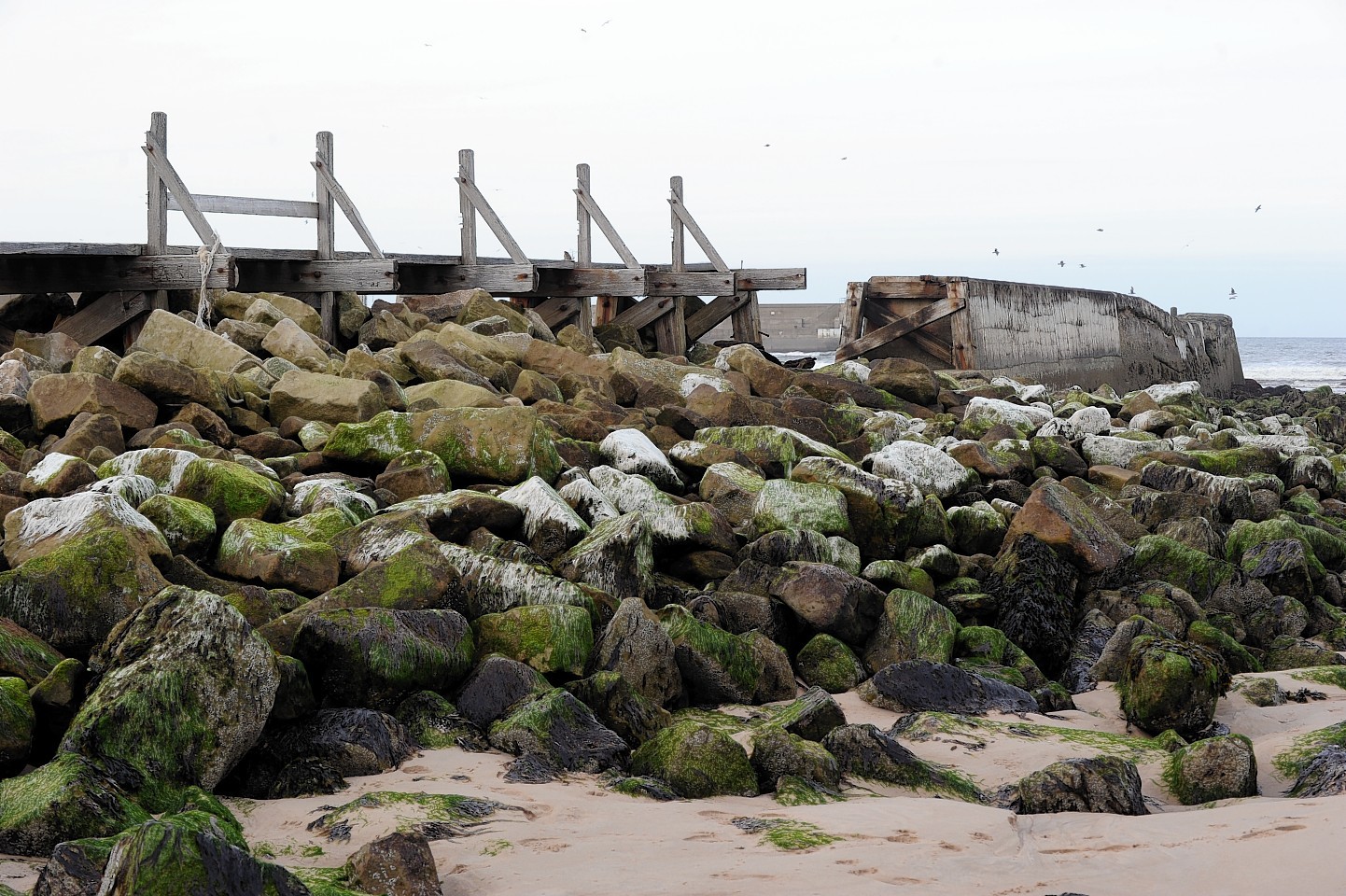Councillors will be asked to adopt a “Look, but don’t touch” policy on a crumbling sea defence which protects homes from flooding at the mouth of the River Lossie.
A report to go before Moray Council’s economic development and infrastructure services committee next week recommends that a “watching brief” is kept on the deteriorating breakwater in Lossiemouth.
The prospect was greeted with dismay last night by locals, who insisted doing nothing was not an option.
One resident, whose street has flooded twice in the past decade, urged the local authority to act, warning: “They definitely need to sort it out”.
The concrete and timber wall – between the estuary and the east beach- protects the Seatown residential area from incoming waves and helps to reduce the build-up of silt at the river mouth.
Consultants were brought in to inspect the breakwater after concerns were raised about its condition following storm damage last winter.
They concluded that it had a life expectancy of another 10 to 15 years in its current state.
The inspection found repairs would not be feasible because of the structure’s poor condition – but said it could be reinforced with rocks at a cost of between £750,000 and £1million.
To fully replace the structure would likely cost £1.5million to £2million.
The report says: “In both cases, costs would potentially be volatile.
“With limited flood risk, benefits are unlikely to amount to much.
“No benefit/cost ratio has been calculated, but it would be very low.”
The report concludes that uncertainty about sedimentation and the rate of deterioration made it difficult to justify carrying out work on the breakwater on economic grounds.
“The risk to public safety is not significant at this time,” it says.
“The situation will be monitored and if the risk changes, action will be taken to address it.
“While there is a risk of a sudden partial failure, this is sufficiently small to suggest that, for the time being, ‘do nothing’ can be recommended.”
Last night, Lossiemouth Community Council Chairman Mike Mulholland said the poor state of the wall has been of continual concern to seafront residents over the 20 years since he moved to the Moray town.
He said: “It has been a steady deterioration over the years along with the erosion of the dunes. The constant worry, as I understand it, is if it goes, it exposes the Seatown to more water.
“For those thinking about selling a house, if it floods the house prices plummet and never come back again. One resident told me he is constantly thinking do I take the chance and stay or do I sell? You can see where that thinking comes from. When they find out the affects of that flooding it will be too late, so to invest in the breakwater would be money well spent I think.”
Resident Michael Christie, of Park Place, has lived just off the Seatown Road for the past 30 years.
He said the council should “definitely” shore up the defence.
He added: “It has flooded twice in the last 10 years. The last time it flooded, we had water swimming down here. The water was right down to the Market Cross.
“There’s are quite a few bits missing on the breakwater, and the harbour wall has been breached. They definitely need to sort it.”
